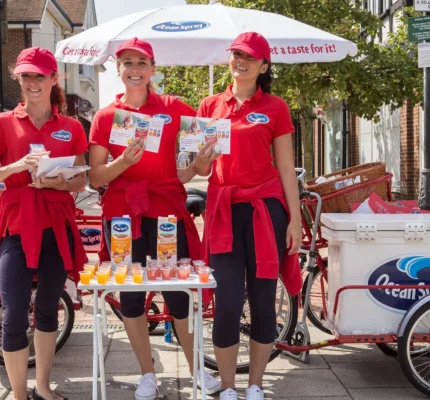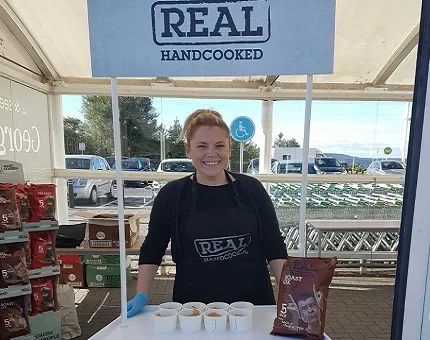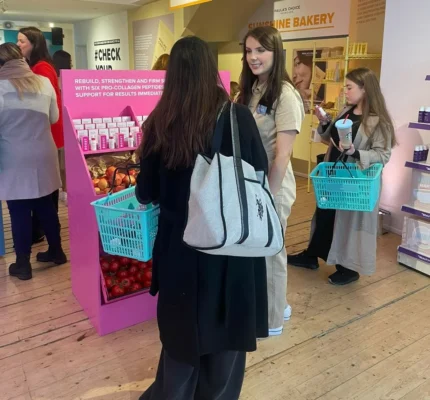Sensory Marketing: Engaging Multiple Senses in Offline Branding
Sensory Marketing: Engaging Multiple Senses in Offline Branding
 Have you ever made a buying decision based on your emotions? It turns out that many people do! Visual content has a high impact on how people make their decisions. Modern brands recognize the value of creating a multi-sensory experience for consumers to stand out in a competitive market.
Have you ever made a buying decision based on your emotions? It turns out that many people do! Visual content has a high impact on how people make their decisions. Modern brands recognize the value of creating a multi-sensory experience for consumers to stand out in a competitive market.
In the online world, multimedia, interactive websites, and unique visuals help to enhance the user experience. These elements are part of sensory marketing, a strategic approach aiming to engage multiple senses for a more targeted and better brand experience.
However, even a glance at successful sensory marketing examples shows that it is complex and requires a detailed understanding.
What is Sensory Marketing?
Sensory marketing is a strategic approach that aims to engage consumers’ senses to create a long-lasting and emotional connection with a brand or product. This type of marketing is different from traditional advertising methods and seeks to stimulate one or more of the five senses: visual perception, hearing, touch, taste, and smell.
Sensory branding started in the 1940s, a crucial time in marketing when experts began studying how visuals affect advertising. In that era, the primary visual elements were posters and billboards.
Today, successful event staff have powerful sensory marketing examples when brands create a more memorable and positive impact on consumers. Let’s explore some of the strategies and ideas to incorporate various senses into offline branding:

1. Strategic Venue Selection
Statistics show that 78% of people prefer to spend money on experiences rather than material goods. On the other hand, 66% of global consumers are willing to pay more for products and services from companies having positive social and environmental impacts. Choosing a venue that aligns with the preferences and interests of your target audience enhances the overall experience. The proper venue enhances the overall sensory experience, bringing positive emotions, brand recall, and consumer loyalty.
2. Thematic Decorations and Visuals
The human brain processes visual information faster than text. The visual elements aligned with the brand’s colours, logos, and messaging create a more impressive user experience. You should consider decorations that should align with the event’s theme. Statistics show that 74% of consumers are more likely to purchase products promoted at branded events that align with their interests. Consistency between the event’s theme and visual elements makes the event’s messaging more powerful.
3. Interactive Displays and Installations to Outline the Brand Identity
Interactive displays and installations shape the brand identity during offline events. It provides a dynamic and engaging way to communicate brand values and messages. It can help to collect valuable data on attendee interactions. This data can offer insights into the customers’ preferences, behaviours, and interests, enabling brands to improve their strategies and future events.

4. Themed Food and Beverage
Themed food and beverages help express brand colours, logos, and messaging. Creating gaps between the food offerings and the event theme enhances the overall atmosphere and allows your prospects to engage with the brand on a sensory level. Offering themed food and beverage experiences will make the event more memorable. The customers will remember unique and creatively presented dishes, associating the positive experience with your brand.
5. Live Demonstrations
Another powerful way to succeed in your sensory marketing strategies is considering Live demonstrations. They provide educational value by showing how products or services work, their features, and potential benefits. This educational aspect helps deliver critical information and build trust with the audience. In a competitive market, live demonstrations provide unique selling opportunities. Brands can gather feedback, answer questions, and address concerns, building transparency and responsiveness.

6. Thematic Photo Booths
Thematic photo booths encourage clients to capture and share them on social media. This user-generated content creates online discussions, extends the brand’s reach, and gathers discussions around the event. Besides, fun and thematic photo experiences make a memorable connection with the brand. Visitors will remember the brand positively when looking back at the photos taken during the event.
7. Personalized Experiences
Statistics show that 80% of consumers have a higher potential to do business with a company if it offers personalized experiences. Personalized interactions build a stronger emotional connection with the brand. Studies show that 44% of consumers will become repeat buyers after a personalized shopping experience. Offline events offer opportunities for real-time data collection on customers’ preferences and interactions. Brands can use this data to improve future marketing strategies, creating continuous improvement.
Conclusion
Events provide an excellent platform for implementing sensory marketing strategies. They offer a controlled environment where organizers can include the sensory elements to align with the brand’s identity and messaging.
As a reputable event-planning company trusted by multiple well-known brands, Eventeem will help you create a visually stunning atmosphere and leave a lasting impression on your audience. From the strategic selection of details to the thoughtful integration of visual, auditory, and other elements, we will create an environment where attendees can see and hear as well as touch, smell, and interact with the brand on an improved level.